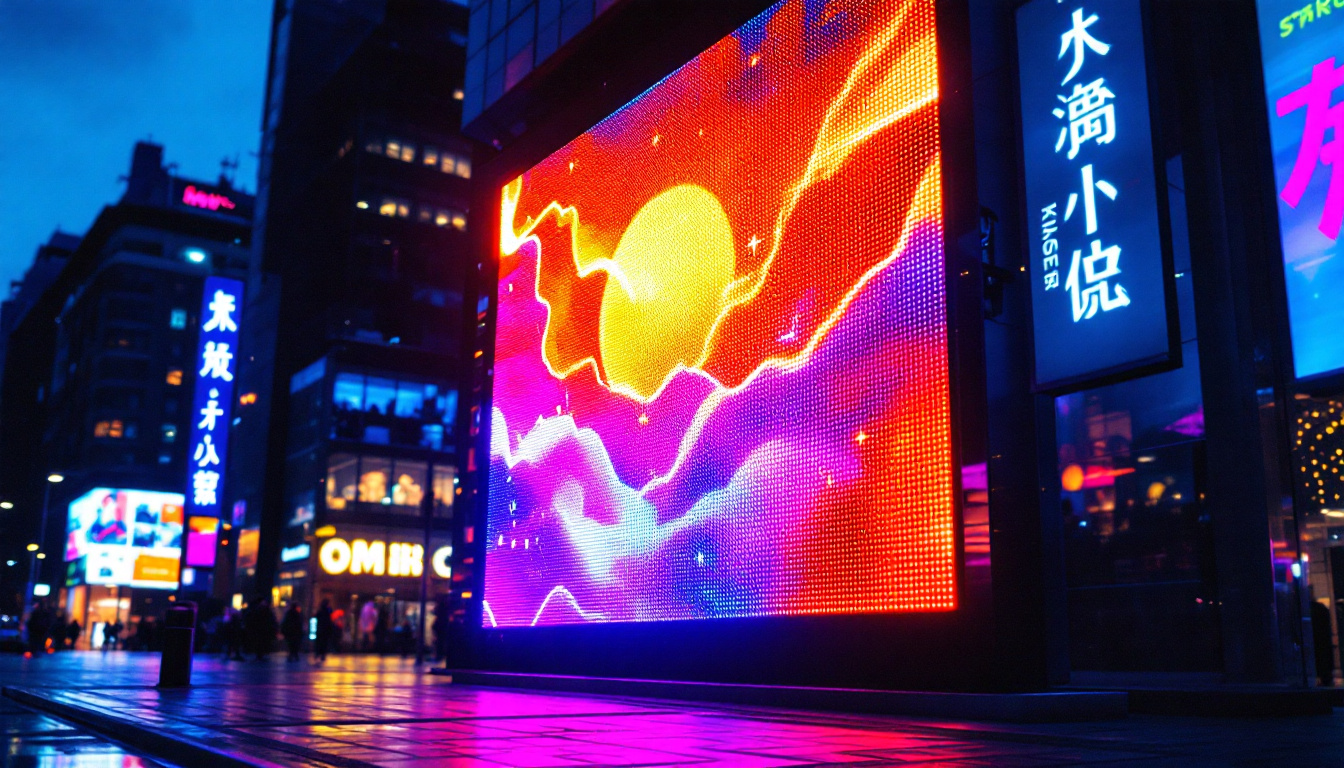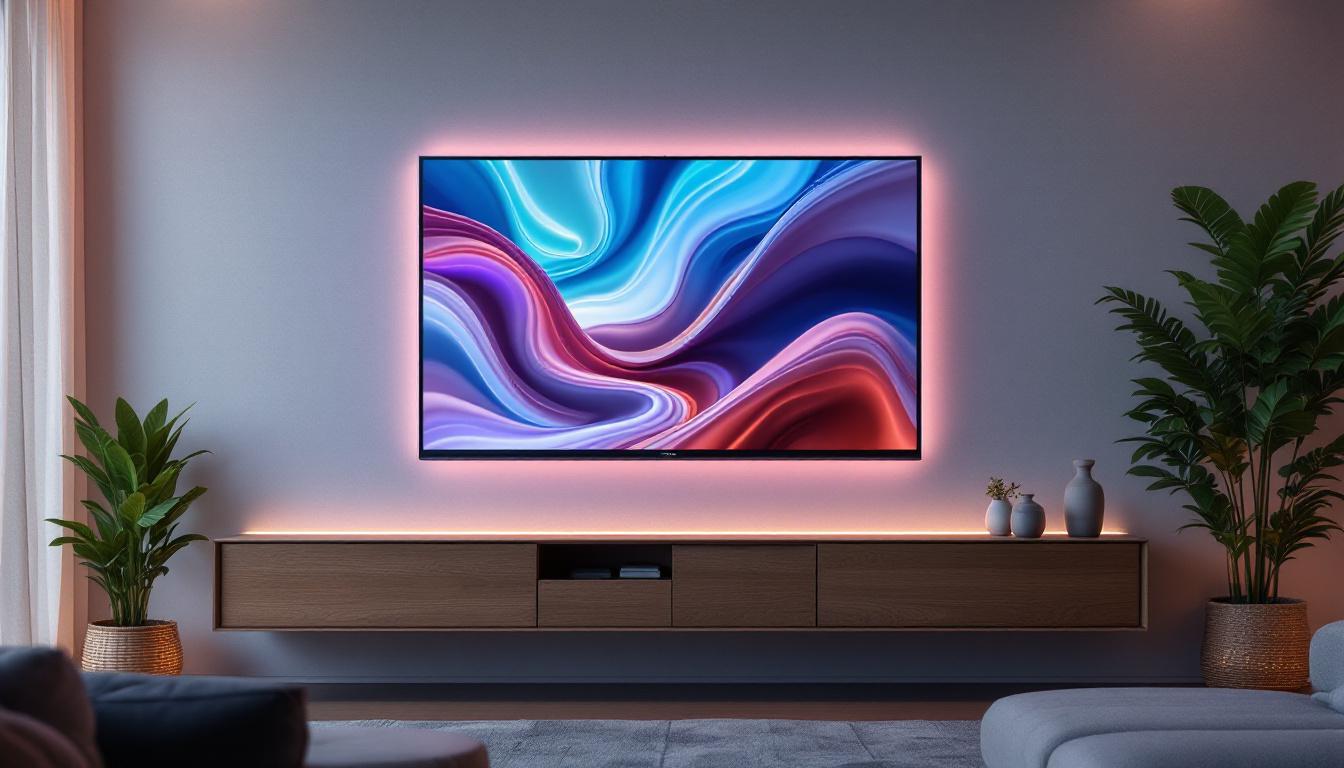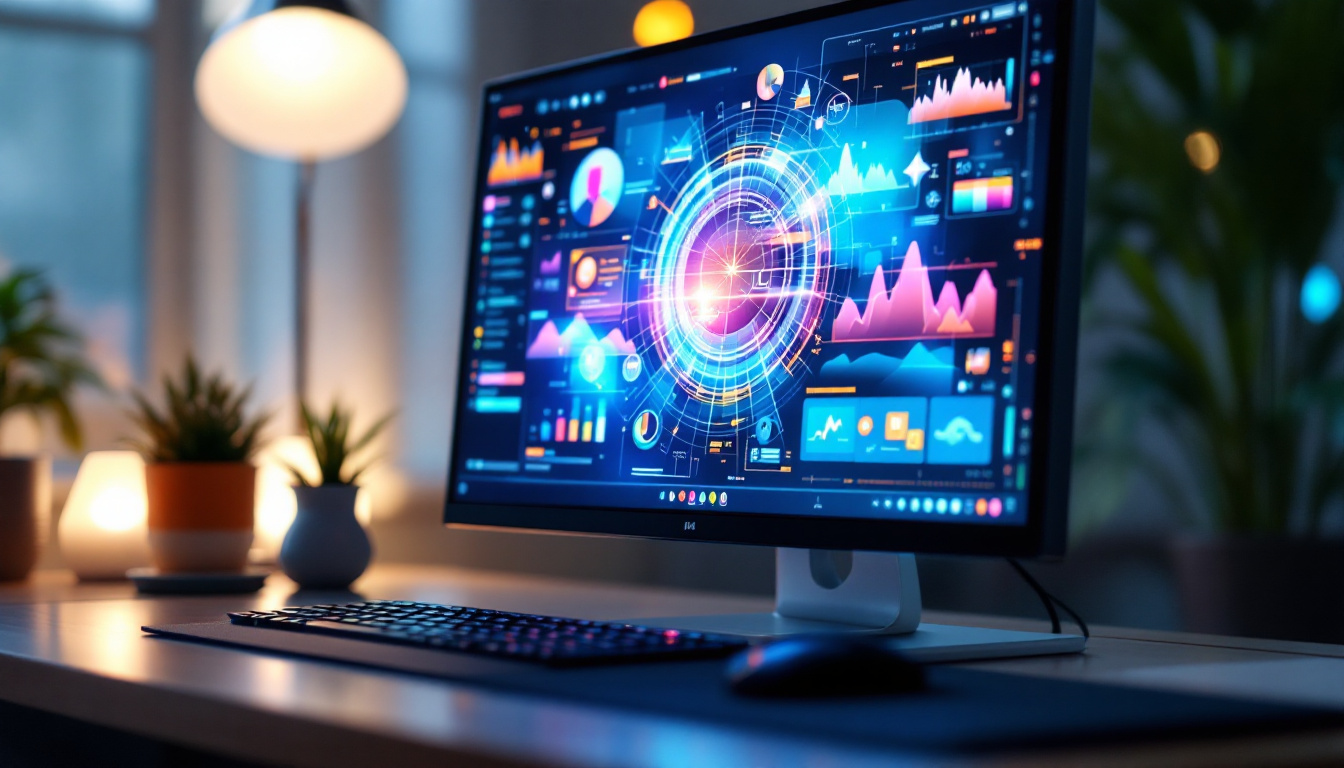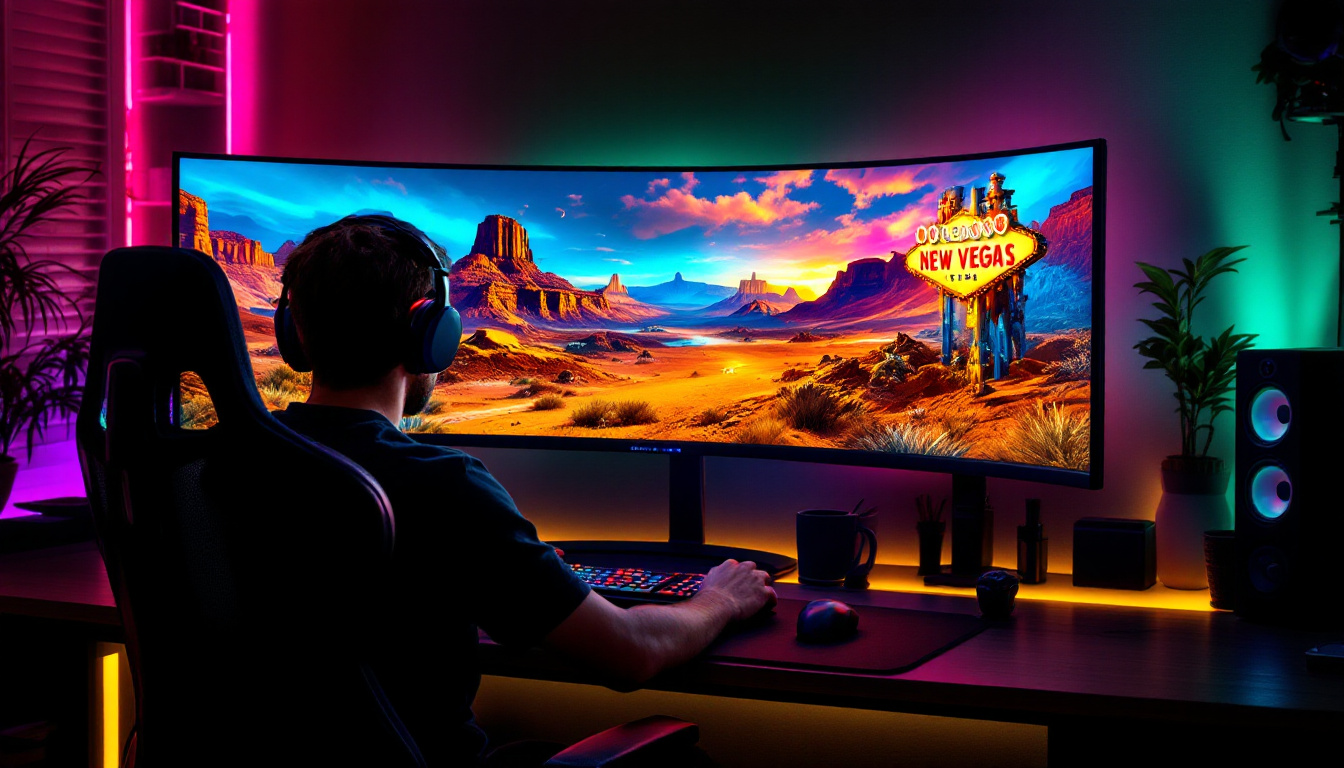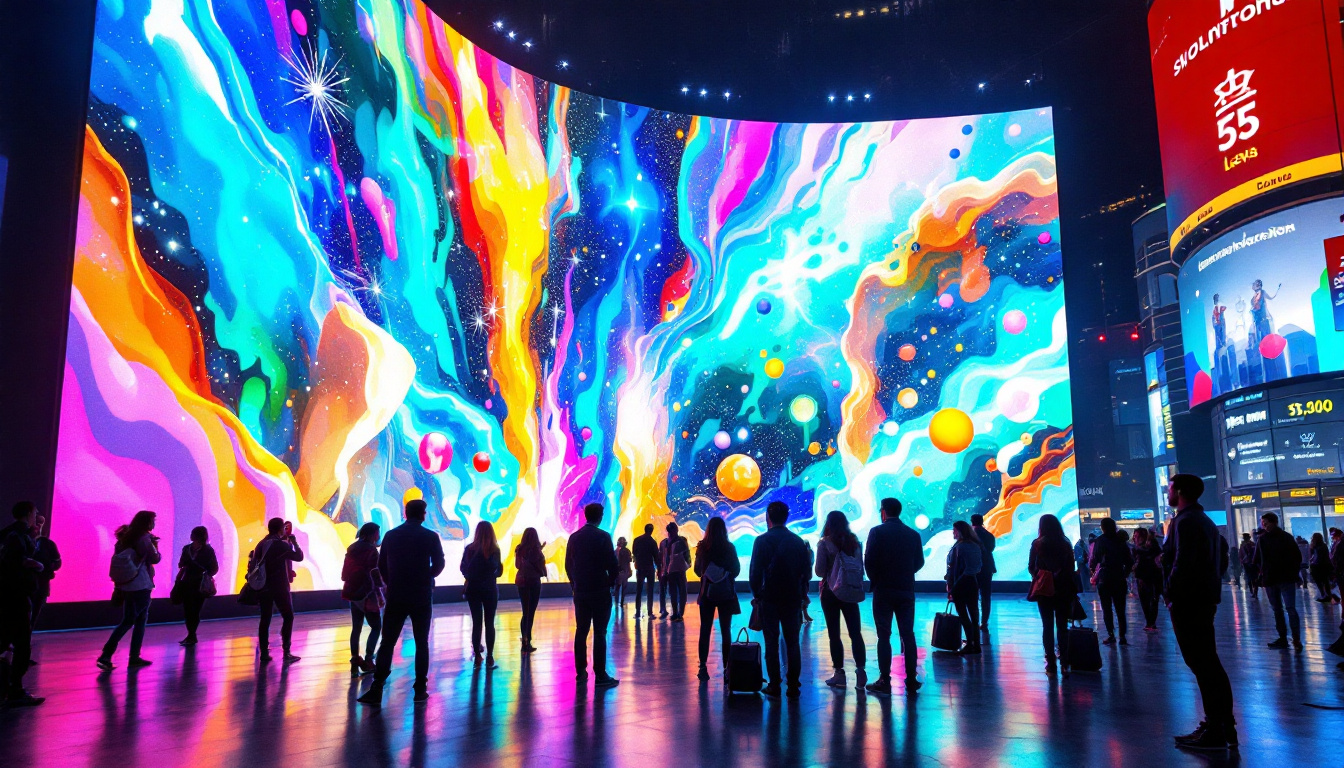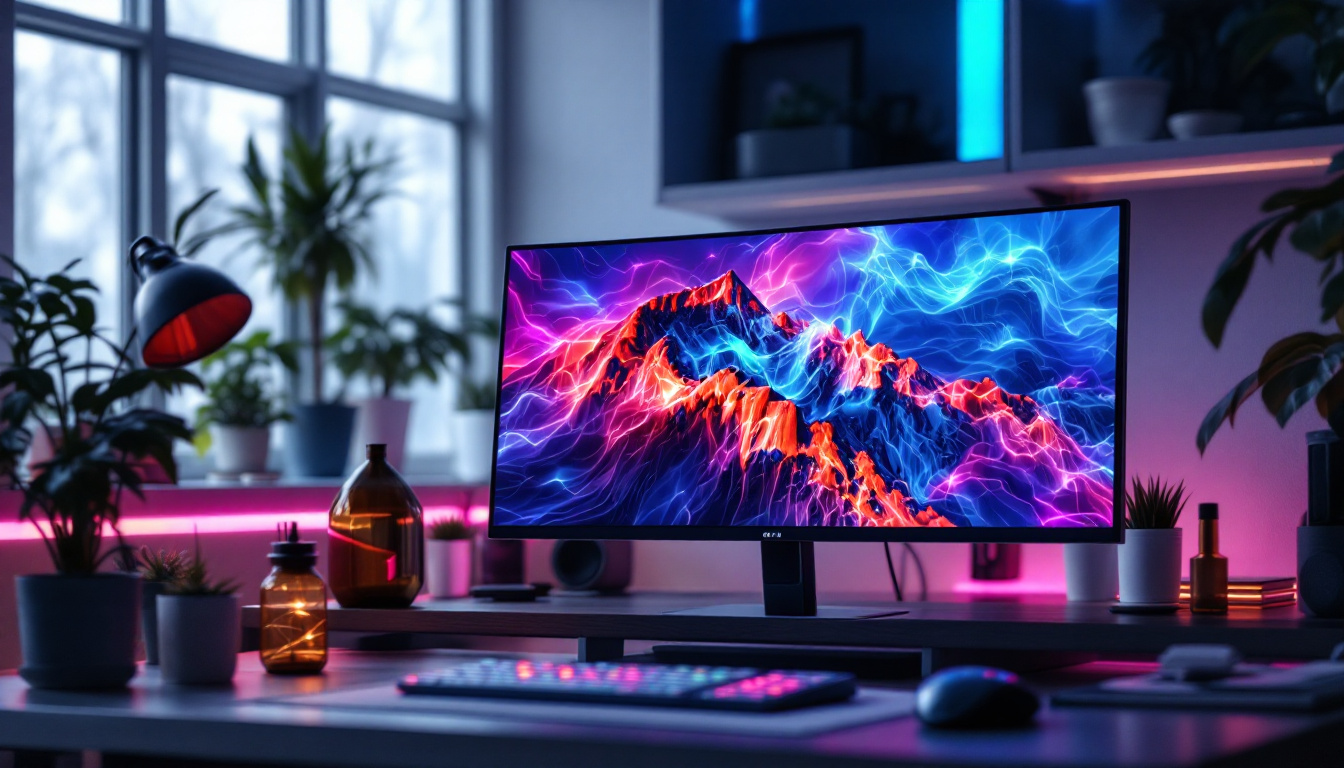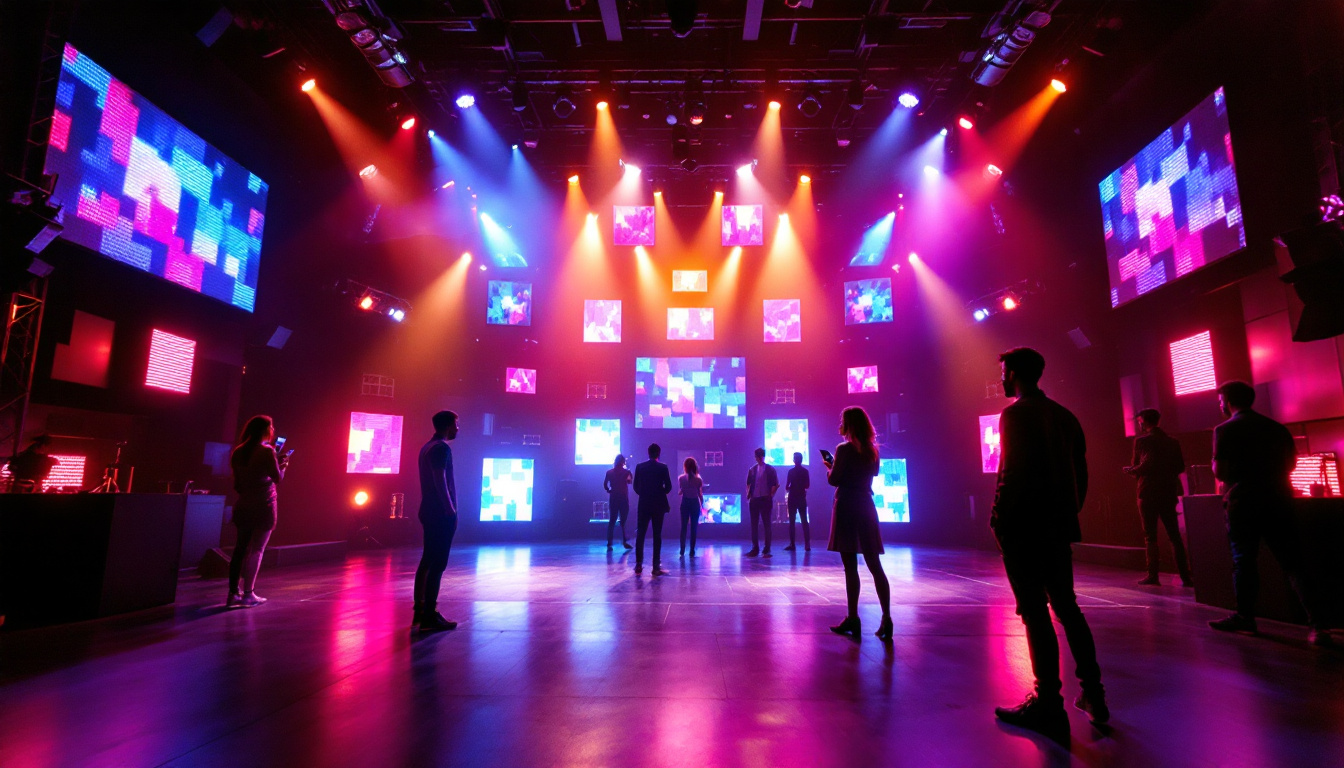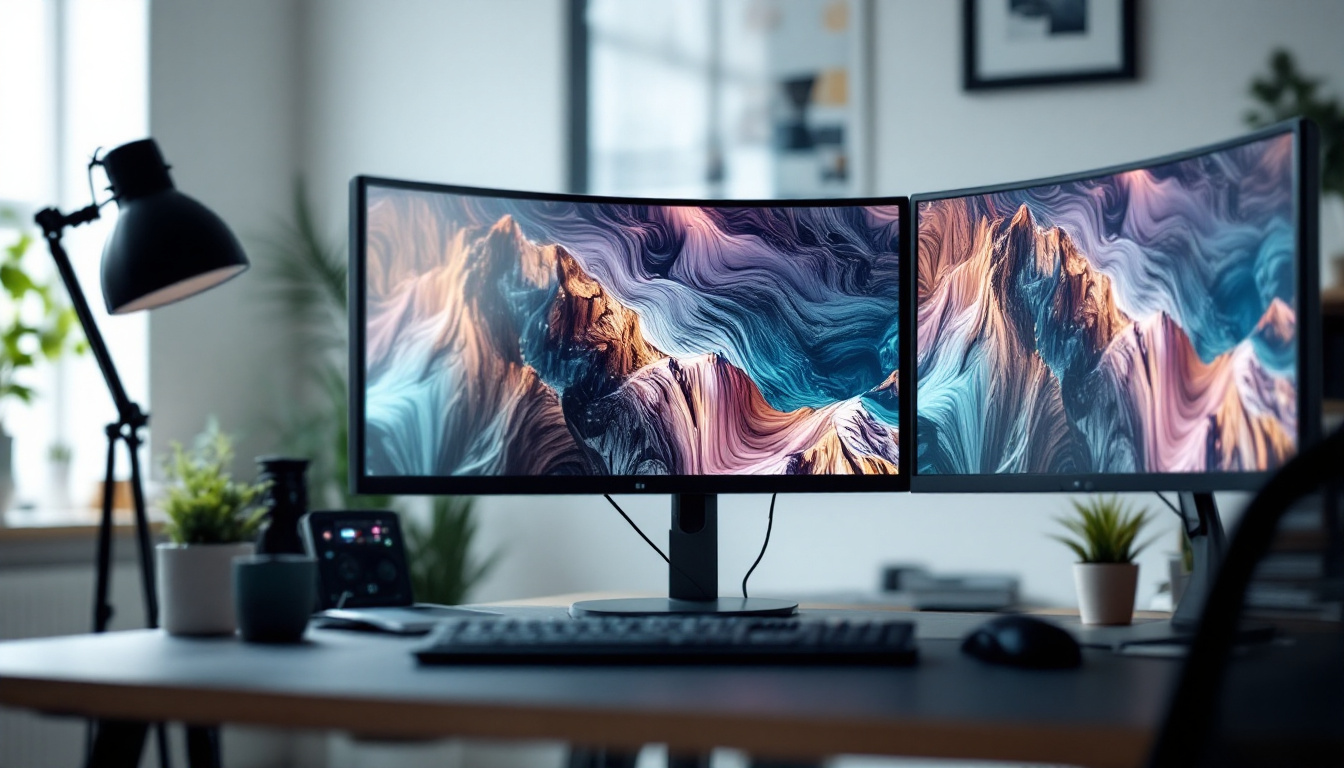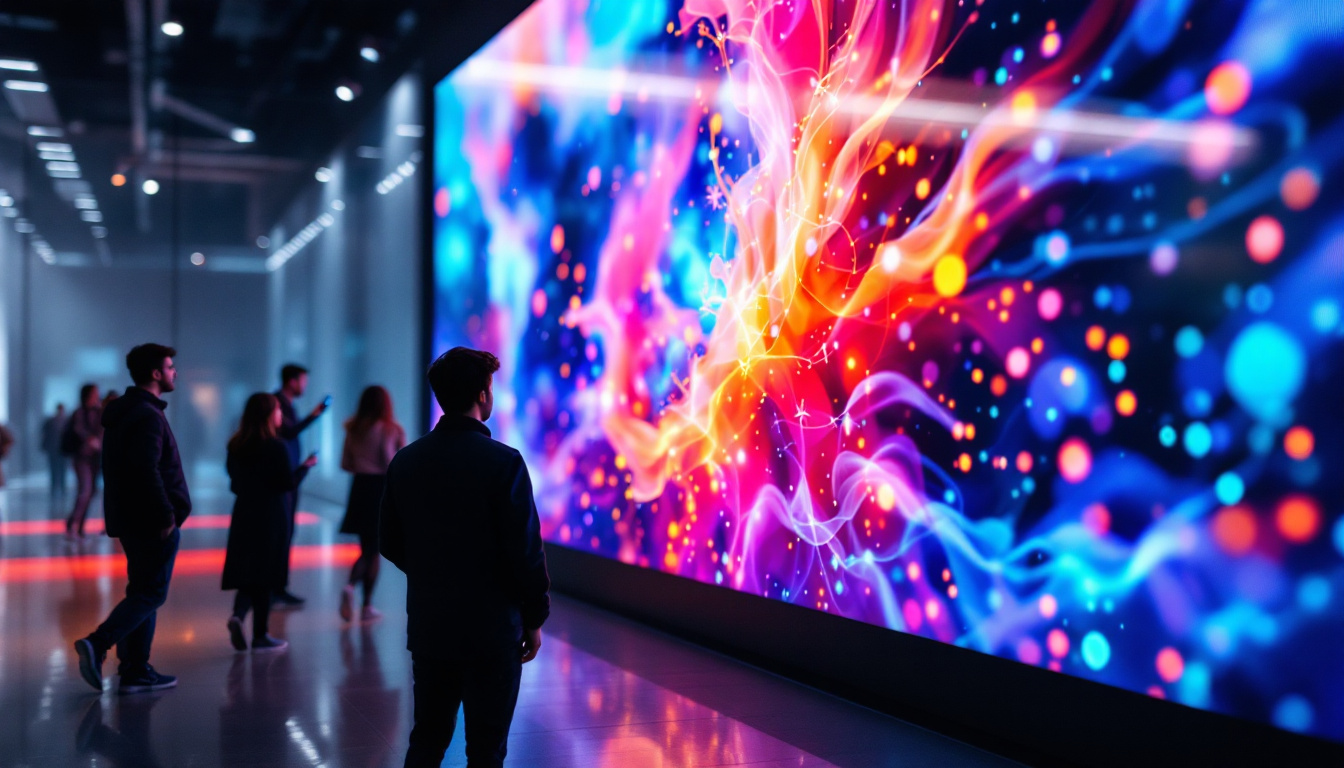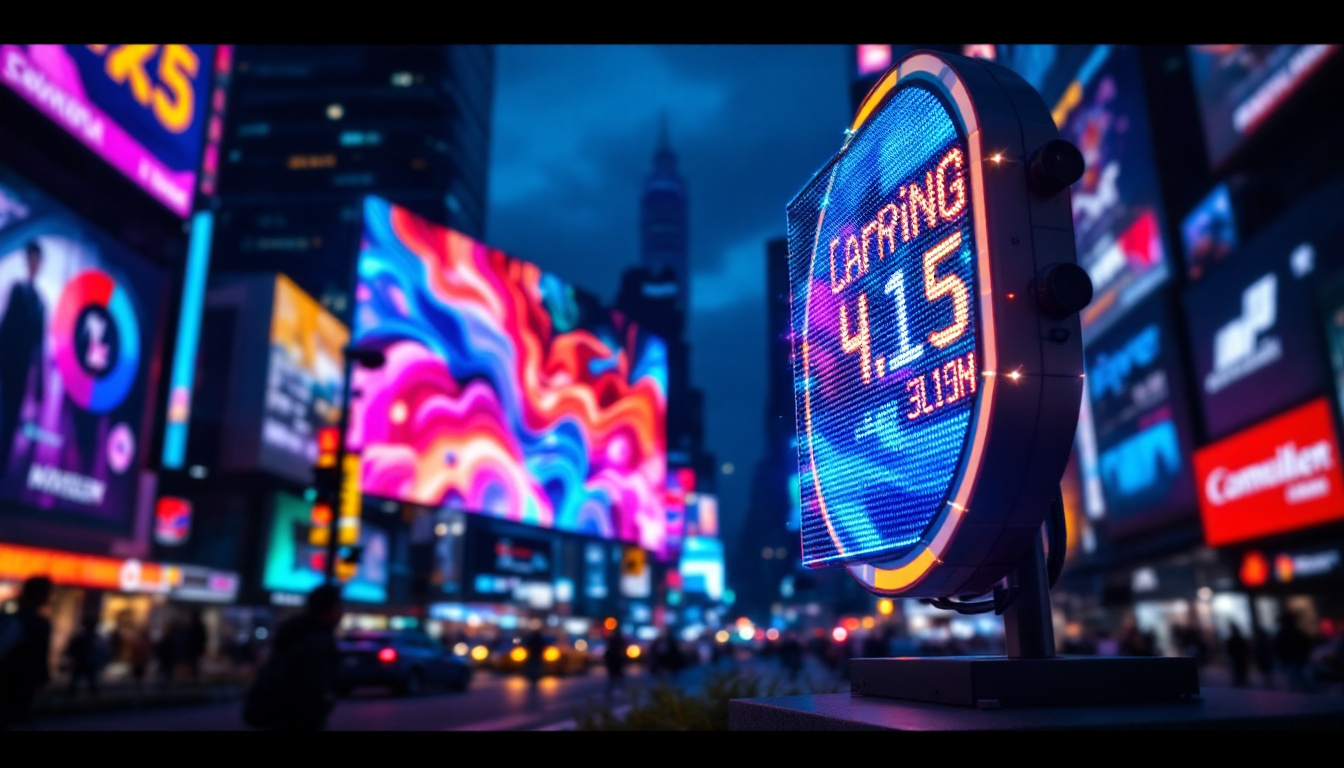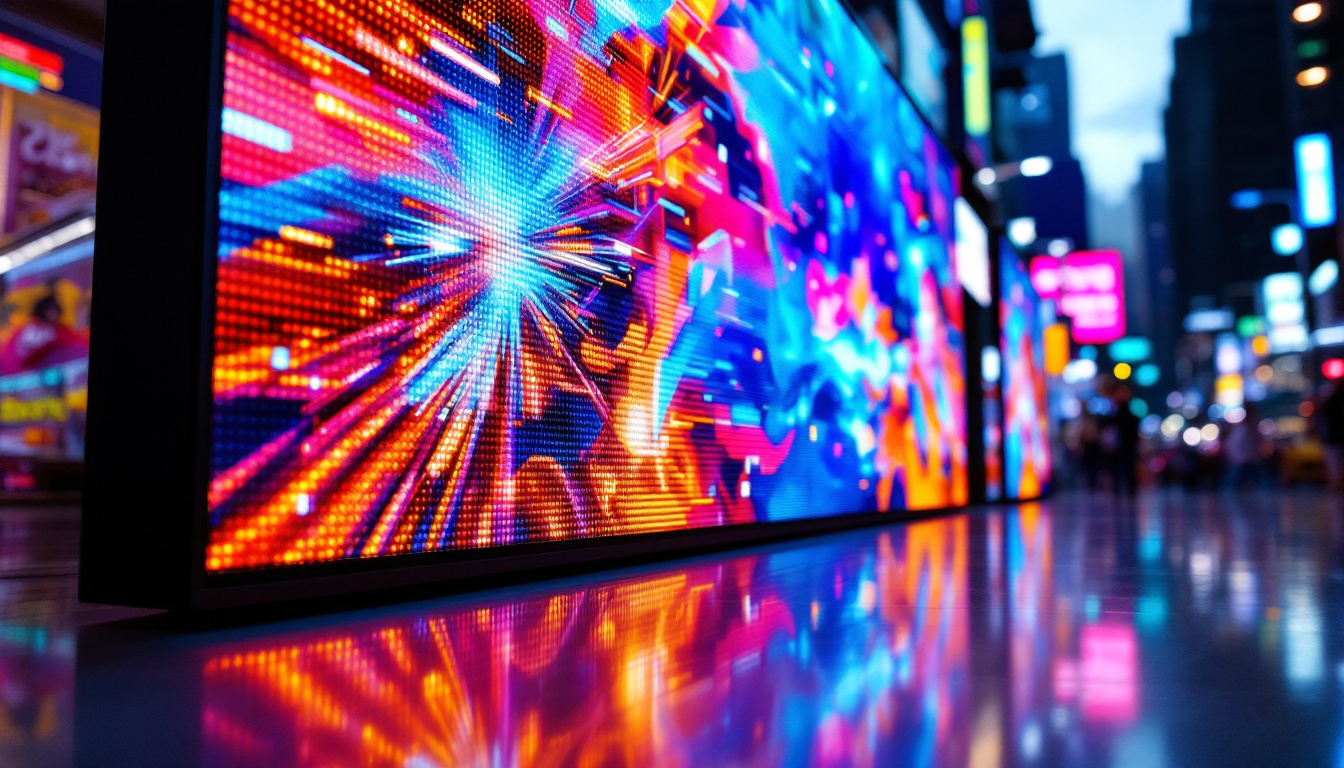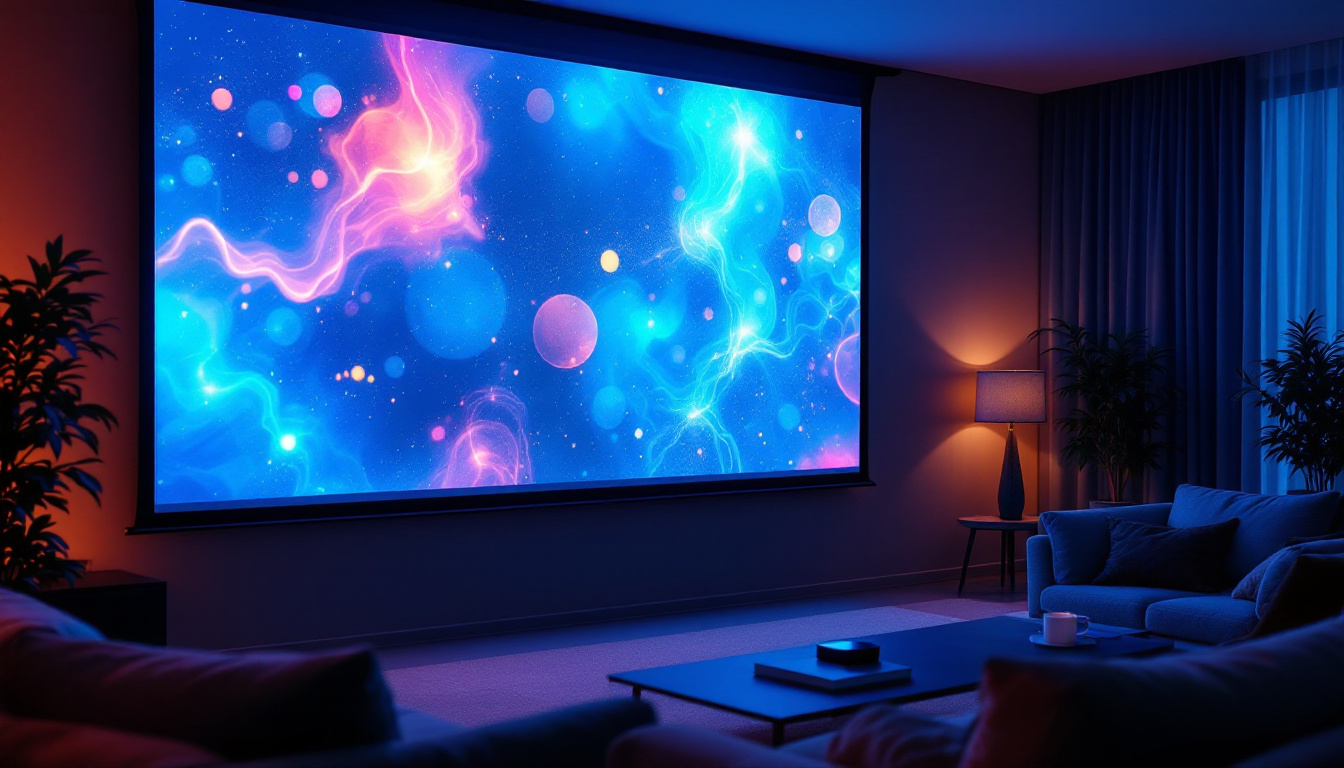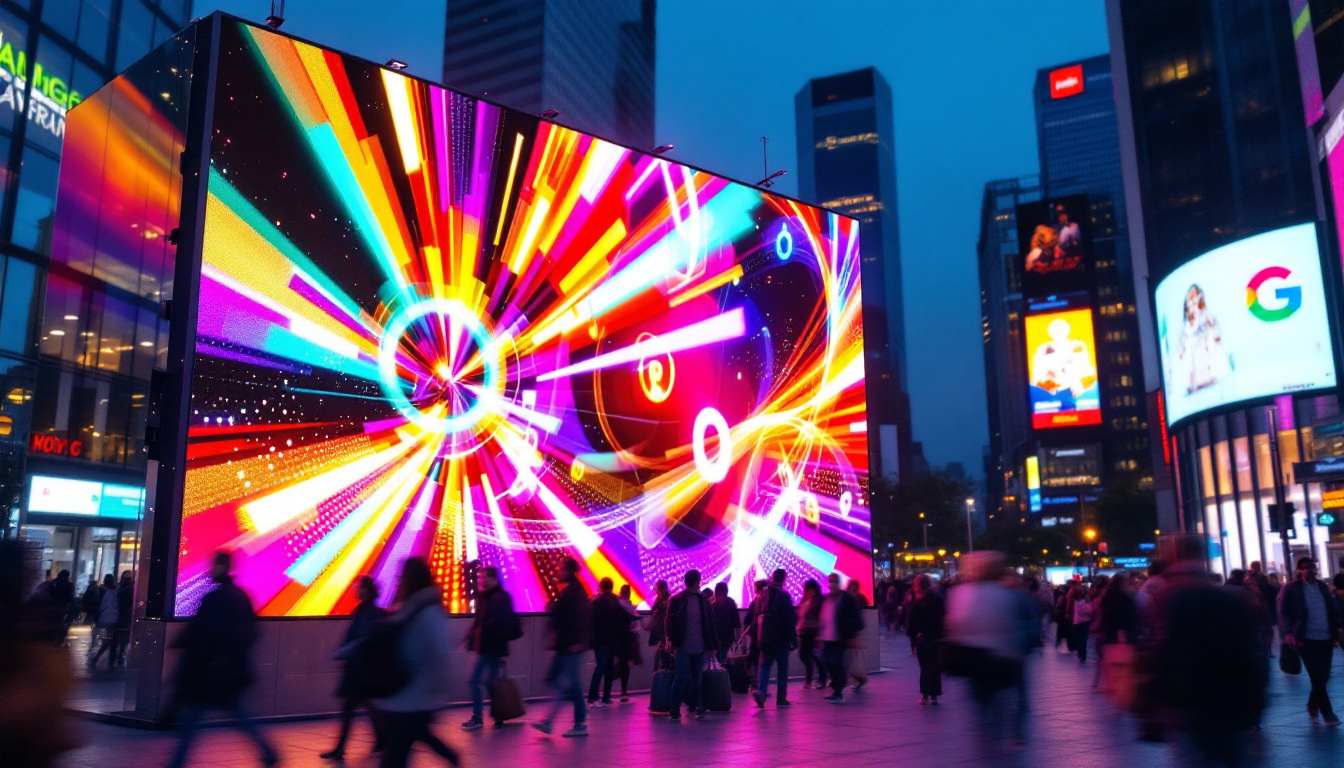In today’s fast-evolving digital landscape, giant touchscreen monitors have become a pivotal interface for businesses, educational institutions, and public spaces. These expansive displays, often powered by advanced LED technology, offer interactive and visually stunning experiences that redefine how users engage with digital content. But what exactly makes LED displays the preferred choice for giant touchscreen monitors? This article delves into the technology behind LED displays, their advantages, practical applications, and considerations for selecting the right giant touchscreen monitor for your needs.
Understanding LED Technology in Giant Touchscreen Monitors
What is an LED Display?
LED, or Light Emitting Diode, displays utilize tiny semiconductor devices that emit light when an electrical current passes through them. Unlike traditional LCDs that rely on backlighting, LED displays use these diodes as the primary light source, resulting in brighter images, better contrast, and improved energy efficiency.
In giant touchscreen monitors, LED technology is often integrated either as direct LED panels or as LED-backlit LCDs. Direct LED displays, sometimes called OLED or microLED, offer superior color accuracy and deeper blacks, while LED-backlit LCDs provide a cost-effective solution with enhanced brightness and longevity. The choice between these technologies often depends on the specific application, with direct LED displays being favored for environments where color fidelity and viewing angles are critical, such as art galleries or high-end retail spaces.
How LED Displays Work in Touchscreen Monitors
The core of a giant touchscreen monitor is its display panel combined with a touch-sensitive layer. The LED panel produces vibrant visuals by illuminating pixels individually, while the touchscreen layer detects user input through capacitive, infrared, or optical sensing methods. This combination enables users to interact intuitively with content on large-scale screens, whether for presentations, collaborative work, or digital signage.
Advancements in LED technology have also led to thinner, lighter panels, making installation and integration easier in diverse environments. Additionally, the scalability of LED displays allows for seamless video walls and ultra-large format screens without compromising image quality. This scalability is particularly beneficial in settings like stadiums or conference centers, where large audiences need to view content from various angles and distances. Furthermore, the durability of LED technology ensures that these displays can withstand the rigors of public use, making them ideal for interactive installations that require frequent touch interaction.
Moreover, the energy efficiency of LED displays not only reduces operational costs but also aligns with growing sustainability initiatives. Many manufacturers are now focusing on eco-friendly production methods and materials, further enhancing the appeal of LED technology in commercial applications. The ability to adjust brightness levels automatically based on ambient light conditions also contributes to energy savings, ensuring that the displays perform optimally while minimizing their environmental impact. As technology continues to evolve, we can expect even more innovative features, such as enhanced connectivity options and integration with smart systems, to further expand the capabilities of giant touchscreen monitors.
Advantages of LED Displays in Giant Touchscreen Monitors
Superior Brightness and Contrast
One of the most significant benefits of LED displays is their exceptional brightness levels, often exceeding 1,000 nits in commercial-grade monitors. This high brightness ensures clear visibility even in well-lit environments such as conference rooms, classrooms, or outdoor venues. Furthermore, LEDs provide superior contrast ratios, which enhance the depth and clarity of images, making text and graphics easier to read and more engaging. This capability is particularly beneficial in settings where visual impact is crucial, such as advertising displays and interactive kiosks, where the ability to capture attention quickly can significantly influence viewer engagement.
Energy Efficiency and Longevity
Compared to traditional display technologies, LED panels consume less power while delivering higher performance. This energy efficiency translates into lower operational costs, which is particularly important for large-format displays that run for extended periods. Additionally, LEDs have a longer lifespan — often rated at 50,000 to 100,000 hours — reducing the frequency and cost of replacements. This longevity not only contributes to sustainability efforts by minimizing electronic waste but also ensures that businesses can rely on their investment over time without the need for frequent upgrades or replacements, making LED displays a smart choice for budget-conscious organizations.
Color Accuracy and Wide Viewing Angles
Modern LED displays are capable of reproducing a wide color gamut, supporting standards like DCI-P3 and Adobe RGB. This capability is crucial for applications requiring precise color representation, such as design studios, medical imaging, and broadcast environments. Moreover, LED panels typically offer wide viewing angles, ensuring consistent image quality regardless of where viewers stand relative to the screen. This feature is particularly advantageous in collaborative settings, where multiple participants may need to view the display from various positions, ensuring that everyone receives the same high-quality visual experience without distortion or color shift.
Durability and Maintenance
Giant touchscreen monitors equipped with LED displays are designed to withstand rigorous use. Many commercial-grade models feature reinforced glass, anti-glare coatings, and robust housings to protect against scratches, impacts, and environmental factors. The modular nature of LED panels also simplifies maintenance, as individual sections can be replaced without dismantling the entire display. Additionally, many manufacturers now offer advanced diagnostic tools that can monitor the health of the display in real-time, allowing for proactive maintenance and reducing downtime. This level of durability and ease of maintenance makes LED displays an ideal choice for high-traffic areas, such as shopping malls, airports, and public transportation hubs, where reliability and longevity are paramount.
Applications of Giant LED Touchscreen Monitors
Corporate and Educational Environments
In corporate settings, giant touchscreen monitors serve as interactive whiteboards, collaborative hubs, and presentation tools. The ability to annotate, zoom, and manipulate content directly on the screen enhances meeting productivity and engagement. Educational institutions leverage these displays to create immersive learning experiences, enabling teachers to deliver dynamic lessons that cater to various learning styles.
For example, universities have adopted giant LED touchscreens in lecture halls to facilitate real-time data visualization and interactive problem-solving. Similarly, corporate training rooms use these monitors to simulate scenarios and promote hands-on learning.
Retail and Hospitality
Retailers utilize giant LED touchscreen monitors for digital signage, product showcases, and interactive kiosks. These displays attract customers with vibrant visuals and allow shoppers to browse catalogs, customize products, or access promotions seamlessly. In the hospitality industry, hotels and restaurants employ large touchscreen displays for wayfinding, menu browsing, and self-service check-ins, enhancing guest experience and operational efficiency.
Public Spaces and Events
Transportation hubs, museums, and event venues deploy giant LED touchscreen monitors to provide information, directions, and interactive exhibits. The durability and brightness of LED displays make them ideal for high-traffic areas and outdoor installations. For instance, airports use these monitors for flight information and interactive maps, while museums create engaging exhibits that respond to visitor input.
Key Considerations When Choosing a Giant LED Touchscreen Monitor
Screen Size and Resolution
The choice of screen size depends on the intended use and viewing distance. Giant touchscreen monitors range from 55 inches to over 100 inches diagonally. Higher resolutions, such as 4K UHD (3840 x 2160 pixels), are recommended for detailed content and close-up interaction to maintain image sharpness and clarity.
It’s important to balance size and resolution to avoid pixelation or excessive power consumption. For collaborative workspaces, a 75-85 inch 4K display often provides an optimal balance between usability and visual quality.
Touch Technology and Responsiveness
Different touch technologies offer varying degrees of accuracy, multi-touch capability, and durability. Capacitive touchscreens are widely used for their responsiveness and support for multiple simultaneous touch points, enabling gestures like pinch-to-zoom. Infrared and optical touch systems are more durable and can detect touch from gloved hands or styluses, making them suitable for industrial or medical environments.
Connectivity and Software Compatibility
Modern giant touchscreen monitors come equipped with multiple input options, including HDMI, DisplayPort, USB-C, and wireless connectivity. Compatibility with collaboration software, video conferencing platforms, and content management systems is essential for maximizing the display’s utility. Some monitors also feature built-in operating systems, allowing standalone operation without the need for external devices.
Installation and Maintenance
Given their size and weight, installation of giant touchscreen monitors requires careful planning. Wall mounting, mobile stands, or ceiling mounts are common options, each with specific space and structural requirements. Additionally, consider accessibility for maintenance and cleaning, as well as the availability of technical support and warranty services.
The Future of Giant Touchscreen Monitors and LED Displays
Emerging Technologies and Trends
The future of giant touchscreen monitors is closely tied to innovations in LED technology. MicroLED displays, which consist of microscopic LEDs, promise even higher brightness, better energy efficiency, and unparalleled color accuracy. Unlike OLEDs, microLEDs are less prone to burn-in and offer longer lifespans, making them ideal for commercial applications.
Furthermore, advancements in touch technology, such as haptic feedback and gesture recognition, are enhancing user interaction, making giant touchscreen monitors more intuitive and immersive. Integration with artificial intelligence and augmented reality is also on the horizon, potentially transforming these displays into intelligent interfaces that adapt to user behavior and context.
Environmental Impact and Sustainability
As sustainability becomes a priority, manufacturers are focusing on reducing the environmental footprint of LED displays. This includes using recyclable materials, improving energy efficiency, and designing products for easier repair and upgrade. The long lifespan and low power consumption of LED technology already contribute to greener operations, supporting organizations’ corporate social responsibility goals.
Conclusion
Giant touchscreen monitors with LED displays represent a convergence of cutting-edge technology and practical design, delivering interactive, vibrant, and reliable solutions for a wide range of applications. Their superior brightness, energy efficiency, and durability make them an excellent investment for businesses, educators, and public spaces aiming to enhance engagement and communication.
Understanding the underlying LED technology, along with key factors such as screen size, touch responsiveness, and connectivity, is crucial when selecting the right giant touchscreen monitor. As technology continues to evolve, these displays will become even more versatile and impactful, shaping the future of digital interaction.
Discover LumenMatrix’s Innovative LED Display Solutions
Ready to elevate your space with the interactive brilliance of LED technology? LumenMatrix is at the forefront of creating immersive environments through our comprehensive range of LED display solutions. From vibrant Indoor and Outdoor LED Wall Displays to dynamic Vehicle and Sports Displays, our offerings are designed to captivate and engage. Experience the future of visual communication with our All-in-One LED Displays, LED Posters, and even Custom solutions tailored to your unique needs. Embrace the revolution in digital signage with LumenMatrix and transform how you connect with your audience. Check out LumenMatrix LED Display Solutions today and start your journey towards unparalleled visual impact.



